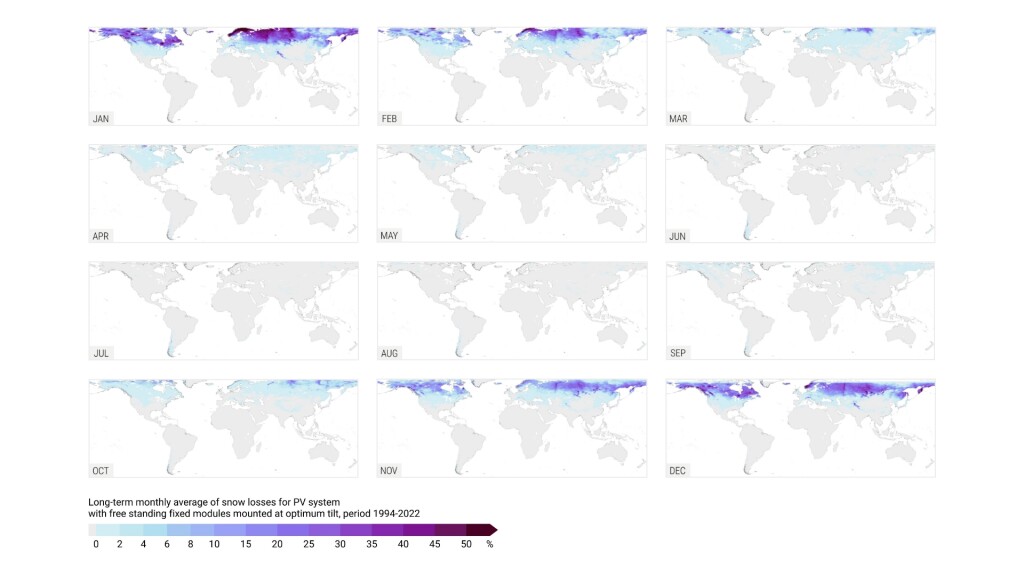Solargis Evaluate now includes snow losses calculations, providing developers with a more realistic estimate of energy production in regions affected by snowfall. This is one of the latest enhancements in the new Solargis Evaluate platform that we launched in early 2025.
Solargis Evaluate users can now automatically simulate snow losses using the new Solargis snow loss model. This allows for better planning of solar panel maintenance and helps mitigate financial losses caused by snowfall.
As part of the latest release, users can also calculate soiling losses using the Solargis soiling loss model.
Accumulation of snow on PV modules blocks solar irradiation and leads to power production losses. This is particularly problematic in regions with frequent and prolonged snowfall, such as parts of Europe, North America, and Asia.
For solar operators, accurate forecasting of snow losses is essential to minimizing financial risks. Grid operators and investors require precise energy yield predictions to manage power supply, purchase balancing power, and plan investments in snow-prone areas.

Since snow losses directly impact final PVOUT, Evaluate provides more realistic energy yield predictions, helping prevent PVOUT overestimation.
The Solargis snow loss model integrates data from two leading sources:
Solargis complements this with high-resolution global tilted irradiation (GTI) data, which is essential for estimating PV power production and plays a direct role in accelerating snow melting.
Snow loss calculations are performed using 15-minute Time Series, ensuring a detailed temporal resolution.
By combining these datasets, Solargis Evaluate ensures highly accurate snow loss modeling, enabling better planning and risk assessment for solar projects.
When calculating snow losses, Evaluate users can now choose from three options:

By integrating snow loss calculations, Solargis Evaluate enhances the accuracy of PV simulations, helping developers, investors, and grid operators make better-informed decisions.
The new Evaluate is a more advanced, cloud-based software solution for complete PV project design and evaluation, integrating:
With climate conditions becoming increasingly unpredictable, precise modeling of environmental factors like snow losses is critical for ensuring financially viable and technically sound projects.